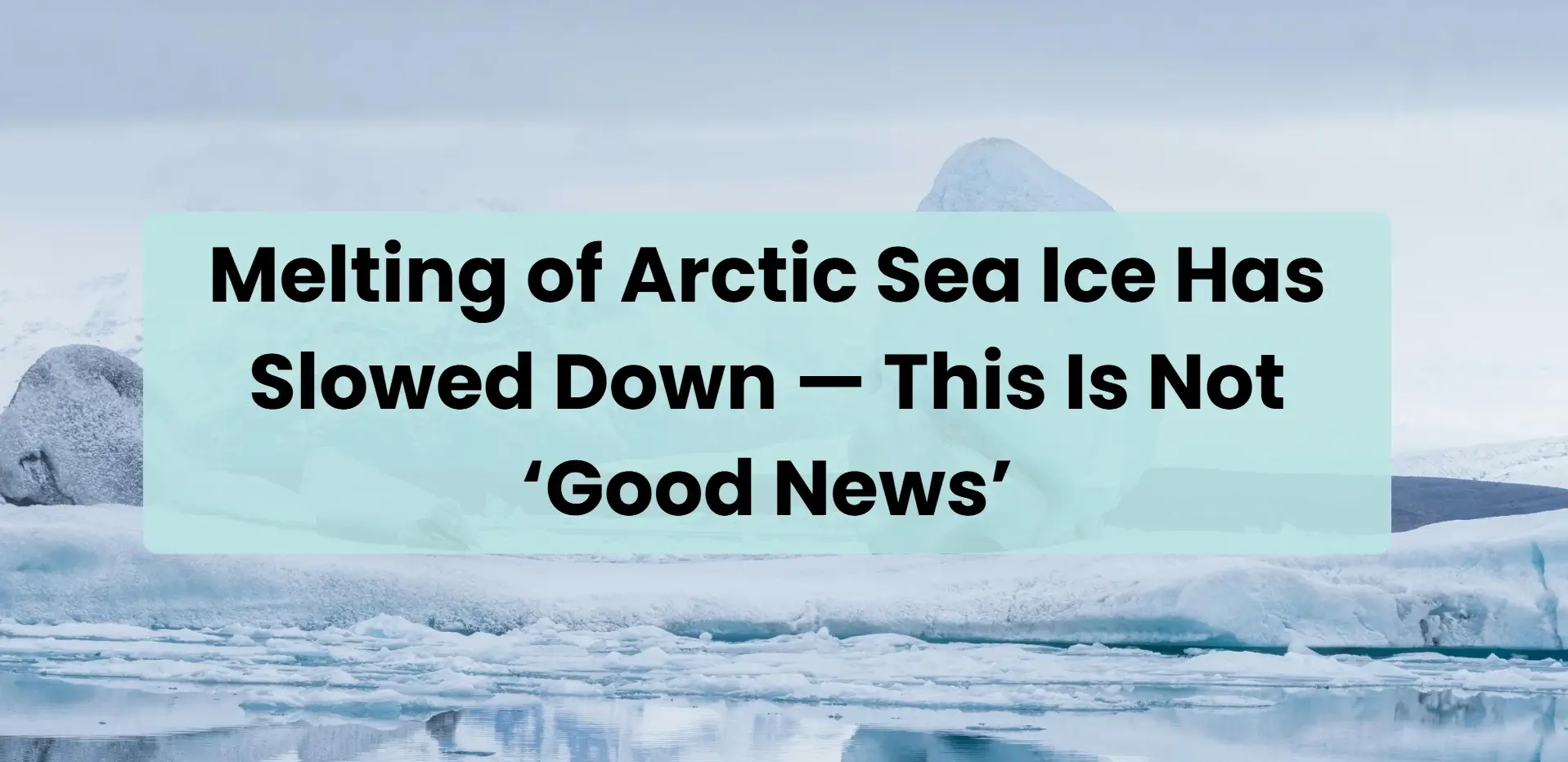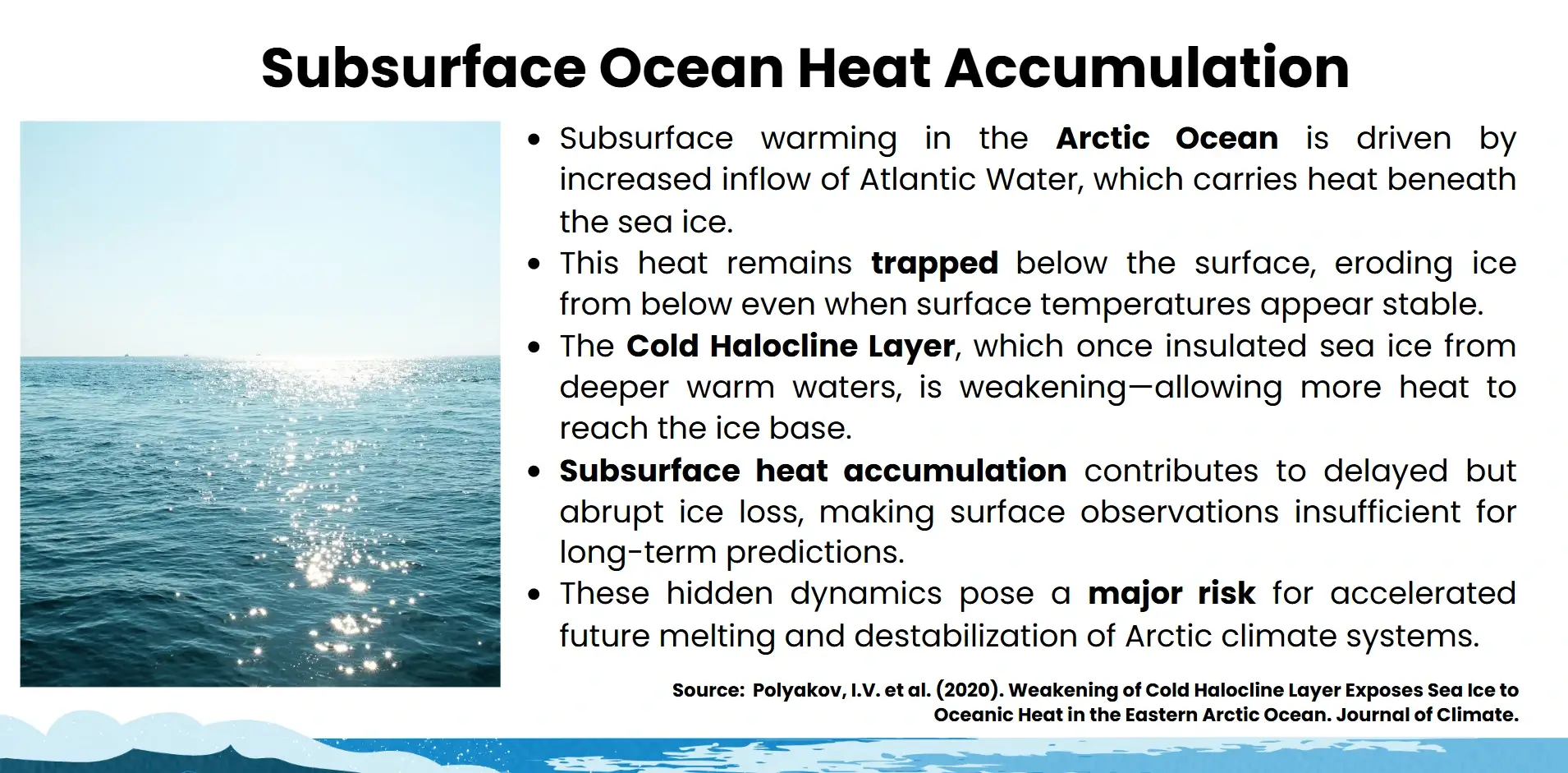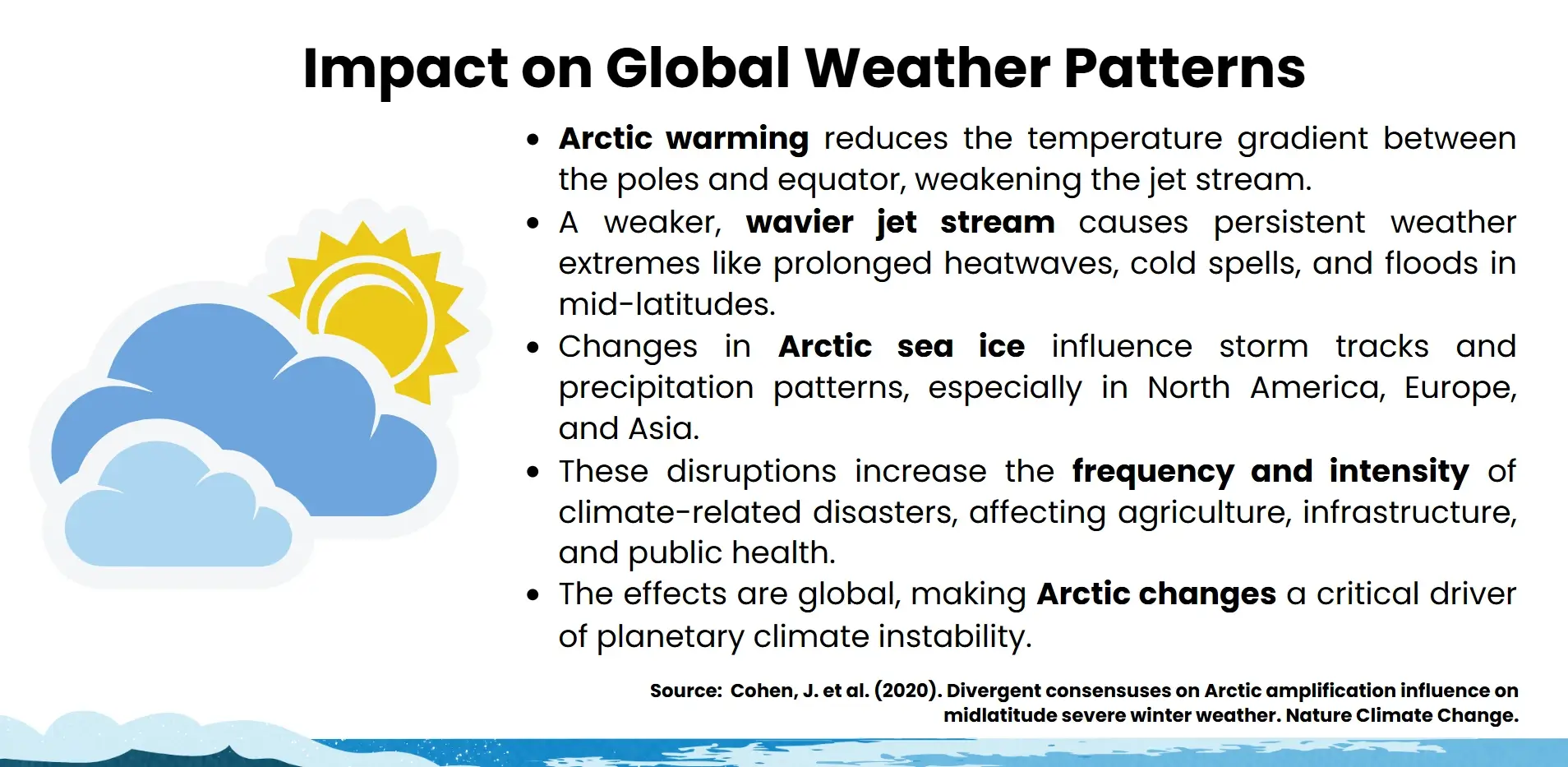The melt rate of arctic sea ice has slowed on a temporary basis as global temperatures have increased, but scientists caution that this pause could very well lead to a temperatures melt increase in the future.

Sea ice in the Arctic region has been an important gauge regarding climatic changes on the planet, as a steady decrease has been seen in its conditions over the last number of years. Recent satellite measurements and climatological reports indicate a transient slowing in the pace of Arctic sea iceloss, and this has been a subject of renewed study. Although this latter fact may be counterintuitive to the rising global temperatures, nevertheless, it is not a sign of climatic recovery, but a complex combination of atmospheric and oceanic factors. Researchers warn that such lulls can be followed by increased melting periods, as a result ofthe accumulation of latent heat and rotating polar circulation systems. The article will show subtle evolution, highlighting the necessity of analysing long-term trends and moving beyond current anomalies. It also brings to light the viability of the sea level rise in the entire world, as well as other sea-based ecosystems and geopolitics in the far north. The article demonstrates the importance of continued scientific tracking necessitating adaptivepolicy solutions in its context of this temporary slowdown in a wider climatological context. The discovery will be used to build a bigger body of data that will bring into doubt the easy explanations of climate data and substantiate the importance of holistic measures to prevent climatic disasters.
Scientific Context of Sea Ice Variability
Scientists are becoming more interested in identifying the underlying climate processes as new measurements of the negative rates of sea ice melting in the Arctic show a slowdown of such rates. The given phenomenon should be viewed in the context of a greater geophysical and climatological dimension.
Arctic Ice Dynamics Drivers Cited as Climatological
Arctic sea ice is extremely sensitive to atmospheric and oceanic factors, particularly air surface temperatures, ocean heat transport, and albedo feedback. The warming rate in the region is almost 4 times that experienced globally, i.e. a mechanism referred to as Arctic amplification. This is enhanced by the lessening of ice cover, which lowers the reflectivity of the surface and speeds up the process of heat absorption. Nonetheless, it is possible that short-term variability may obscure long-term trends, e.g. cloud cover, wind direction& pattern, and ocean currents. An example is that extra summer cloudiness could limit melt rates even though the temperatures are high.

Latent Energy Storage and Oceanic Heat Redistribution
Warmer ocean waters beneath the ice are a crucial factor in the dynamics of the north region. Stored heat way down at the deeper ocean layers can be disseminated vertically by upwelling or mixing, which adds to basal ice melt. A temporary delay in melting of the surface can be accompanied by a rise in heat build-up beneath the ice, where, during future periods, rapid melting can ensue. This potential, particularly when held in latent forms, is of real concern since it can result in nonlinear ice retreat responses once thresholds are exceeded. Warming of the Atlantic Water inflow to the Arctic Basin has been verified by the independent measurements of satellite altimetry and autonomous floats.
Season-to-Season Variability
The Arctic climate system is determined by large-scale atmospheric patterns, such as the North Atlantic Oscillation (NAO) and the Arctic Oscillation (AO). Positive cycles of these oscillations can cause warmer conditions and thicker ice, followed by negative phases of these oscillations that cause colder conditions, promoting ice thinning. The recent slowdown in melting can be just a by-product of these oscillatory interplays in opposition to long-term decline. In addition, Arctic weather may be affected by teleconnections with tropical phenomena, notably El Niño- Southern Oscillation (ENSO), thus further confusing predictive models.
Implications for Climate Modelling and Policy
Improving knowledge of the cause-and-effect relationship of Arctic sea ice variability is necessary in the effort to improveclimate models and policy-making. Temporary retards in melting should not be confused with recovery, but as an indication of complex systembehaviour. Future tipping point anticipation and adaptive actions require continuing monitoring with satellite data, ocean buoys, and climate reanalysis.
Why the Slowdown is Not Palliative
Despite the recent statistics indicating a slowdown in the rate of Arctic sea ice melts, this situation should not be seen as a preconditionfor a stabilisation of climate and environmental recovery.
Poor Image of Short-Term Trends
Sea ice may vary in the short term, confusing people about the direction of climate change. The observation of apparent slackening in the rate of melting may be due to temporary atmospheric influences, as cooler summers or different winds, and may not be due to a lowering of the temperature. The fact that Arctic sea ice once more approached temperatures seen before the decline began in the 1970s, as Notz and Stroeve (2018) presented in their studies. Inference based on short-term data has the risk of misleading the perception and policymaking of people, which may hinder climate mitigation efforts.
Latent Heat of Future Acceleration
Itis a major cause of concern. Once surface melting slackens, subsurface warming does not cease and simply stores energy until it may cause an abrupt loss of ice. This latent heat, and especially latent heat in the Atlantic Water layer below the Arctic ice package, has been recorded to eat away ice at the bottom without affecting surface temperatures. This may indicate that the present slowdown in melting is followed by a period of accelerated melting: delayed thermal feedback and unstable ice domains.

Back-Next Redundancy and Irreversibility
The Arctic system has strong feedback processes such as the ice-albedo effect, due to which decreased ice concentration yields greater solar absorption and further warming. Increased sea ice has no impact to restore lost albedo and reverse heat gains in ocean. In addition, after key thresholds have been passed, recovery becomes less and less likely, e.g. loss of multi-year ice or thermohaline shutdown. Such a deceleration thus could be a misleading lull before the maw of tipping points.
Policy and Communication Implications
The solution to interpret the slowdown as an reassuring action could undermine the forcefulness of climate action. Policy makers and the populace may interpret the data incorrectly and believe that the mitigation processes are working or that the natural variations will rectify themselves. Such a misunderstanding poses a risk of missing important actions of intervention in the reduction of emissions, governance of the Arctic and plans to adaptation. Results show that climatic indicators need to be evaluated with strong long-term evidence and cannot be based on singular anomalies, as highlighted by the IPCC (2023).
Wider Climate Consequences
The pause in the melting of the sea ice in the Arctic is scientifically an interesting phenomenon, but brings important implications to the world of climate, policy and ecological resilience.
Global Thermohaline Motion and Ocean Settlement
The thermohaline circulation is a major process caused by the presence of sea ice in the Arctic, which drives global oceanic circulation and redistributes heat. Reduced ice cover changes salinity temperature gradients, and thereby weakens the Atlantic Meridional Overturning Circulation (AMOC). A decrease in the AMOC would also alter the monsoon systems, compound the heatwaves in Europe and cause destabilisation in weather patterns in the tropics (Caesar et al., 2018). Even short-term perturbation of ice dynamics can cause feedbacks in ocean stratification and biochemical cycling, with enduring impacts to marine ecosystems and fisheries.
Mean Amplification of Extreme Weather Events
The warming of the Arctic has an unequal impact on mid-latitude weather by the modulation of jet streams. With the melting of sea ice, the difference in temperature between the Arctic and the equator becomes lower, and the jet stream turns out to be even more curvy and sluggish. The result of dissolved circulation leads to extreme weather conditions in the extra-polar regions of unending dryness, flooding, and cold snaps. In such a manner, the reduction in the ice melting can delay these processes, but the processes underpinning the slowdown are going on and accelerating.
Carbon Cycle Feedbacks and Permafrost Thaw
The processes of Arctic ice dynamics are strongly interconnected to the permafrost stability. Permafrost is thawing release massive amounts of methane and carbon dioxide, which are potent greenhouse gases which compounds global warming. Although the deceleration of surface melt has no halt impact on subsurface thawing, this still proceeds under the influence of heat accretion and alteration of hydrology. These releases are under-represented in most modelsof the climate, and could lead to under-prediction of the future warming pathways.
Global Governance and Policy Urgency
The larger climate picture makes it all the more important that effective and anticipatory policy responses are developed. Since the slowdown in energy demand may be easily misunderstood as a symptom of recovery, this may hold back mitigation efforts and undermine international climate pledges. The Arctic should be governed through an art of coordination that comes with a scientific surveillance which will be accompanied with adaptive models in reducing emissions, indigenous jurisdiction and geopolitical integrity. To provide adequate resilience, the Arctic Council and IPCC highlight that fluctuations in transient climate disclosures have to be framed within longer-run data to avoid complacency.

Communication and Policy Issues
The recent temporary stagnation of the Arctic sea ice melt level creates a complicated problem in climate policy and communication to the population. Scientific misinterpretation of such anomalies can affect credibility and stall necessary attempts to mitigate urgencies.
Mismatch of the Scientific Signal with Policy Timeline
The political and economic cycles of climate policy conflict with the scale of change of the environment, as adverse change can be long-term. A temporary drop in the decline of ice in the Arctic could be used to suppress future emission respective expectations and to undermine regulatory frameworks. As an example, policymakers can use transient data and interpret them as signs of natural recovery without paying attention to the cumulative results of greenhouse gas emissions and systemic responses. According to Moser and Boykoff (2013) another challenge to effective governance is the temporal mismatch between climate science and policy decision-making.
Threat to Notoriety and Media Slanting
The narratives in the media are very important in shaping the perception of climate science by the people. A simplification of headlines or selectivity in reporting in trends of Arctic ice can give a person an erroneous idea of the harshness of the problem of climate change. It can be positioned as a slowdown, a pause or more of a reversal, which creates in complacency and distrust. This miscommunication destroys trust in science establishments and trust in climate action in society. Effective communication in science requires a careful balance between factual correctness and communicative effectiveness,where neither the suppression of alarmism nor false reassurance of priority is advocated.
The Problems of Complexity-into-Actionable Policy Translating
The nature of Arctic climate is necessarily complex due to the nonlinear processes involved, inter-organised feedback loops, and regional variation. To turn this intricacy into policy, several disciplines must be brought into cooperation with dynamic manoeuvres. Responsiveness is frequently hampered by institutional inertia, however, as well as divided systems of governance. Although the Arctic Council plays an important role in fostering cooperation in the region, it does not have any binding enforcement mechanisms and can thus not respond adequately to high rates of environmental change. To reinforce the multilateral climate governance, it requires more integration of scienceinto the assessment made into legal and economic tools.
Strategic communication and interacting with the population
To address the problem of misinterpretation, the long-term trends should be highlighted, aberrations put into context, and a wide audience reached in their communication. The world needs scientists, communicators, and policymakers who come up with narratives together that both reflect and acknowledge uncertainty, and avoid trying to dampen the sense of urgency. Illustrative media, info-graphic, and participative frameworks will help educate the communities and develop the democratic dialogue around climate change. According to IPCC (2023), open and inclusive communication is a key part of creating a resilient society, as well as maintaining the impetus of achieving climate objectives.
Conclusion
The recent slackening off ofthe melting of Arctic sea ice may be scientifically interesting, but should not be interpreted as any evidence of climatic recovery. It also indicates existing short-term fluctuations in a long-term pattern of deterioration caused by anthropogenic climate change and systemic feedbacks. Underlying all this, the accumulation of latent heat and alterations to the ocean are still destabilising the polar environment, which in the future may experience relatively rapid losses. Such a misleading suspension finds an echo in the urgency of scientific intensive observation and high-quality climate modelling, as well as active policy work. Misinterpretation of those anomalies may undermine the will of the people and result in lost time in applying much-needed mitigation measures. Since the Arctic continues to act as a sentinel to the climate health of the whole world, its shifting dynamics requiresophisticated communications and harmonised governance. It is critical to realisethat such transient trends are complex and must serve as a source of confidence and resiliency to build societies, not an illusion and engine of inaction, and climate change. The slowdown is not a break,it is a signal that the next battle will be even harder than the last one was.